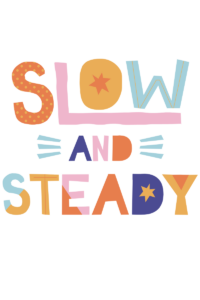Does the word “data” make you cringe Like, ‘I became a teacher, not an accountant—wth?!'”
It’s for sure overwhelming thinking about spreadsheets or endless charts.
I totally get it buuuuut it doesn’t have to be that way.
Using data in your K-5 classroom can be simple and effective. It can help you support your students to become confident, fluent mathematicians.
There’s probably an eye roll here lol. But let’s break it down so you can see what I’m saying.
Step 1: Start Small and Focus on What Matters
What Do I Mean:
No matter what anyone says or mandates, you don’t need to track every little thing. Focus on a few key areas that directly impact fluency:
- Are students flexible with numbers?
- Can they solve problems accurately?
- Are they efficient with their strategies?
You can use quick, low-pressure assessments like exit tickets, math talks, or student reflections.” Keep it quick and easy, not dissertation-level analysis.
How to Do It:
So, for quick, low-pressure assessments like exit tickets, math talks, or student reflections. Let me give you an example, after teaching addition strategies, you might ask:
- Solve 7 + 8 in two different ways.
- What strategy did you use, and why?
Look for patterns in their responses. Are they stuck on counting strategies? Are they trying out multiple methods? These small data points give you big clues about where to focus your teaching.
From the Figuring Out Fluency Books:
Try tracking strategies using a simple chart inspired by my Figuring Out Fluency series.
Multiplication and Division Book
You could create a list of strategies like “Make a Ten” or “Double and Adjust” and check off which ones students use correctly during math talks or independent practice.
I’ve also created a separate Fluency Progress Template, which you can find HERE. For students, My Math Fluency Progress you can find HERE.
Step 2: Use Visual Tools to See Progress
What Do I Mean:
Data doesn’t have to be numbers on a page—it can be visual and interactive. Use tools like bar graphs or sticky note charts.
How to Do It:
Create a fluency growth chart where you and your students can see their improvement. For example:
- Track how many problems they solve using efficient strategies over time.
- Celebrate milestones with fun stickers.
Disclaimer:
While you may want to create a classroom chart that screams, “Wow, look at us thriving!”. Student progress and reflection should be private to the student. We don’t want to encourage competition and have students lose self-esteem because they’re in a comparison mindset with their peers. One-to-one celebrations are important and really helpful for building up your students.
Step 3: Support Individual Students with Personal Goals
What Do I Mean:
Data helps you move beyond whole-class teaching and work with students one-on-one. Personal fluency goals give students a clear focus and make learning feel achievable.
How to Do It:
After a quick assessment, pull a student aside and say:
- “I noticed you’re great at using doubles, but you’re still counting on your fingers for problems like 8 + 5. Let’s work on making a ten strategy this week.”
Practice together using hands-on tools like number lines, counters, or mini whiteboards. Set a small goal: “Can you solve two problems using this strategy today?”
In the Figuring Out Fluency Books, there is an activity called Fluency Fives (quick sets of five problems designed to target specific strategies). These are great for focused practice and tracking individual growth without overwhelming students.
Addition and Subtraction Book
Step 4: Involve Students in the Process
What Do I Mean:
When students understand and own their progress, they’re more motivated to improve.
How to Do It:
Show students their data in simple ways, like a personal fluency tracker. For example:
- They can create a “Strategy Showcase” folder where the a student adds examples of strategies they’ve mastered.
- Have them self-assess: “What strategy did I use? Did it work? Could I try another?”
A Classroom Example:
One 4th-grade class created fluency journals. After every math talk, students wrote:
- The strategy they used.
- One thing they were proud of.
- One strategy they want to try next time.
These reflections helped students think critically about their growth and see data as something empowering.
Step 5: Use Data to Guide Your Next Steps
What Do I Mean:
Once you’ve gathered some data, use it to make informed decisions about your teaching.
How to Do It:
- If the whole squad is struggling with subtraction strategies, slow it down. Spend an extra day on Number Talks for subtraction.
- If a small group needs help with multiplication fluency, pull them for a targeted small-group session.
- If some students are stuck on basic facts, move back to foundational strategies like breaking apart numbers before advancing to more complex problem types. There’s no shame in hitting rewind- math fluency is a marathon, not a sprint.
Here’s The Gist
Using data doesn’t have to be complicated or time-consuming. By focusing on small, meaningful assessments, visual progress, and personal goals, you can support your students to fluency in ways that build their confidence and skills.
Take a moment to reflect:
- What’s one way you can start using data in your classroom?
- Which strategies do your students need the most support with right now?
Want more ideas? Check out my Figuring Out Fluency series for ready-to-use activities and tools to simplify your fluency journey.
Addition and Subtraction Book
Multiplication and Division Book
You can also download:
Fluency Progress Template which you can find HERE. Or for students- My Math Fluency Progress which you can find HERE.

